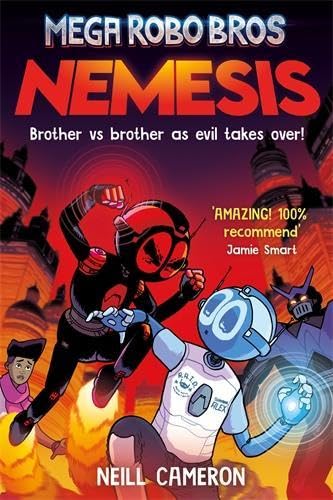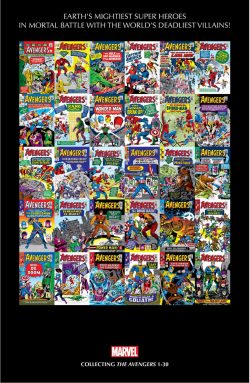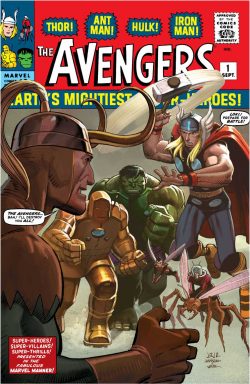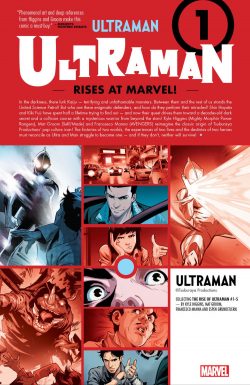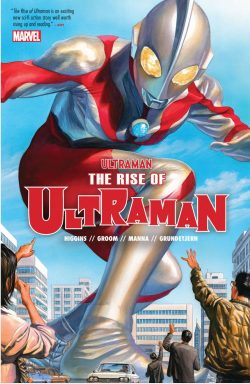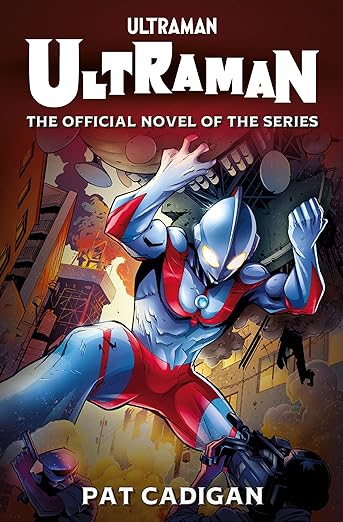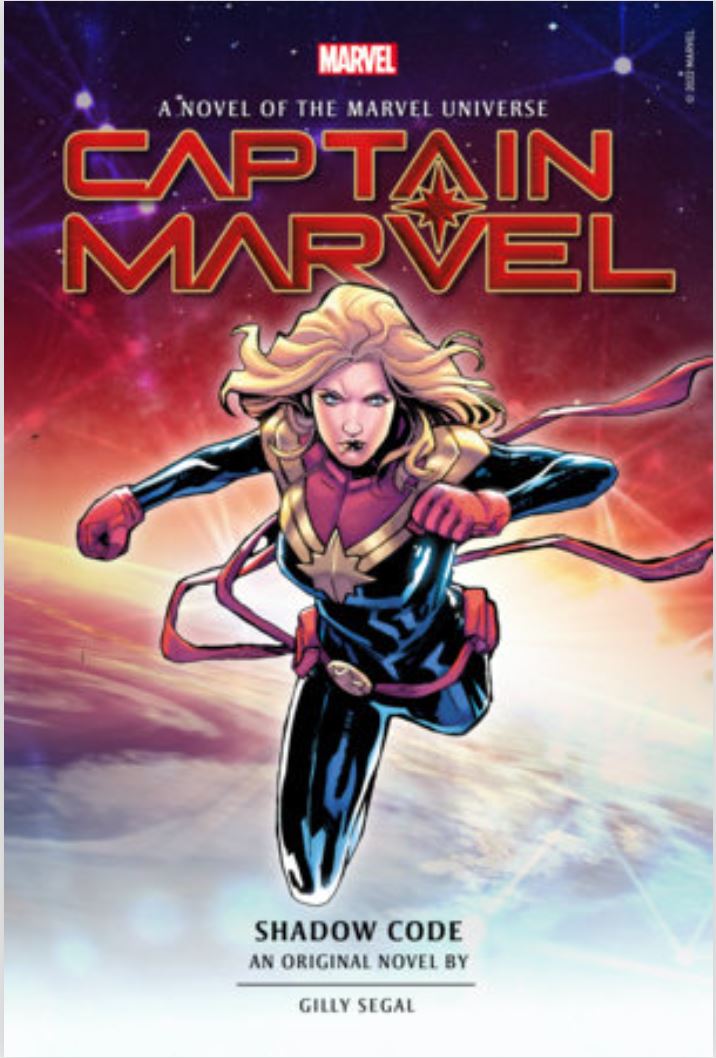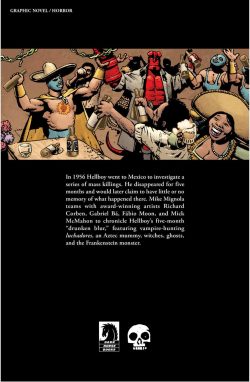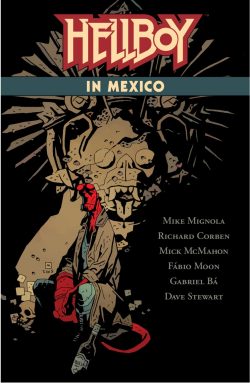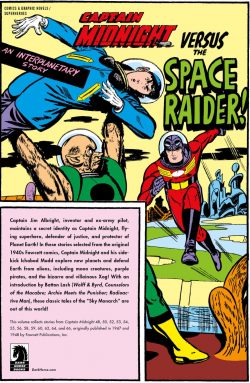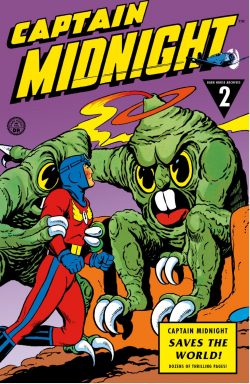

By Dan Parent, J. Bone , Paul Kupperberg, Bill Galvan, Pat Kennedy, Tim Kennedy, Fernando Ruiz, Bob Smith, Rich Koslowski, Al Milgrom, Glen Whitmore, Jack Morelli, Gisele Lagace, Derek Charm, Sina Grace, Phil Jimenez, Ryan Jampole, Gary Martin, Digikore Studios & various (Archie Comics)
ISBN: 978-1-64576-887-6 (HB/Digital edition)
Following the debut of Superman, MLJ were one of so many publishers to jump on the “mystery-man” bandwagon: concocting their own small but inspired pantheon of gaudily clad crusaders. In November 1939 they launched Blue Ribbon Comics, and swiftly followed up with Top-Notch and Pep Comics. Content was that era’s standard mix of masked heroes, clean-cut two-fisted adventurers, genre prose pieces and gags.
Soon after, Maurice Coyne, Louis Silberkleit and John Goldwater (hence MLJ) spotted a gap in the already overcrowded market. In December 1941 the Fights ‘n’ Tights, heaving He-Man crowd were gently nudged aside by a much less imposing hero: an ordinary teenager in mundane adventures just like the readership, but with the companionable laughs, good times and romance emphasised. Goldwater developed the youthful everyman protagonist concept and tasked writer Vic Bloom & artist Bob Montana with making it all work. Inspired by and referencing the successful Andy Hardy movies (starring Mickey Rooney), their new notion premiered in Pep Comics #22. The unlikely star was a gap-toothed, freckle-faced, red-headed kid obsessed with impressing the pretty blonde next door.
A 6-page untitled tale introduced hapless boob Archie Andrews and wholesomely fetching Betty Cooper. The boy’s wryly unconventional best friend and confidante Jughead Jones also debuted there, as did idyllic small-town utopia Riverdale. It was a huge hit and by the winter of 1942 the kid had won his own series and then a solo-starring title. Archie Comics #1 was MLJ’s first non-anthology magazine and with it began an inexorable transformation of the entire company. With the introduction of ultra-rich, raven-haired Veronica Lodge, all the pieces were in play for the comic book industry’s second Genuine Phenomenon.
By 1946 the kids were totally in charge, and MLJ officially reinvented itself, becoming Archie Comics, retiring most of its costumed characters years before the end of the Golden Age and becoming, to all intents and purposes, a publisher of family-friendly comedies.
The hometown settings and perpetually fruitful premise of an Eternal Romantic Triangle – with girl-hating Jughead to assist or deter and scurrilous love-rat rival Reggie Mantle to test, duel and vex our boy in their own unique ways – the scenario was one that not only resonated with fans but was somehow infinitely fresh and engaging…
Like Superman’s, Archie’s success drove a change in content at every other US publisher (except Gilberton’s Classics Illustrated), creating a culture-shifting multi-media brand encompassing TV, movies, newspaper strips, toys, merchandise, a chain of restaurants and (in the swinging sixties) a pop music sensation when Sugar, Sugar – from one of the many animated TV cartoons – became a global summer smash hit. Clean and decent garage band “The Archies” has been a fixture of the comics ever since…
The eternal triangle has generated thousands of charming, raucous, gentle, frenetic, chiding and even heart-rending humorous dramas ranging from surreal wit to frantic slapstick, with the kids and a constantly expanding cast of friends (boy genius Dilton Doily, genial giant jock Big Moose and occasional guest Sabrina the Teenage Witch amongst so many others), growing into an American institution and part of the American cultural landscape.
The feature thrived by constantly refreshing its core archetypes; boldly and seamlessly adapting to a changing world outside those bright and cheerful pages: shamelessly co-opting youth, pop culture, fashion trends and even topical events into its infallible mix of comedy and young romance. Each and every social revolution has been assimilated into the mix and over decades the company has confronted most social issues affecting youngsters in a manner both even-handed and tasteful.
Constant addition of new characters like African-American Chuck Clayton and girlfriend Nancy Woods, fashion-diva Ginger Lopez, Hispanic couple Frankie Valdez &Maria Rodriguez, student film-maker Raj Patel and spoiled home-wrecker-in-waiting Cheryl Blossom all contributed to a wide and refreshingly broad-minded scenario. In 2010 Archie jumped the final hurdle (until now) – for decades a seemingly insurmountable one for kids’ comic books – when openly gay student Kevin Keller became an adored and admired advocate tackling and dismantling one of the last major taboos of mainstream comics.
Created by writer/artist Dan Parent & inker Rich Koslowski (lettered by Jack Morelli and coloured by Digikore Studios), Kevin debuted in Veronica #202 (September 2010). It was the first comic book in the company’s long, long history to go into a second printing…
This landmark Kickstarter-funded hardback/eBook compendium gathers that delightful debut and the avalanche of tales that followed – specifically from Veronica #202, 205, a 4-issue Kevin Keller miniseries in #207-210; Kevin Keller #1-15, Life with Kevin #1-5; Life With Archie #16, a strip from 2015’s Comic Book Legal Defense Fund #1 and a slew of seldom seen, rare and even all-new material comprising the first decade of the new star..
It all begins with a ‘Foreword’ by creator Dan Parent and context-establishing ‘Introduction – Who is Kevin Keller?’ before the first of many, many covers and variants segues into ‘Chapter One: Isn’t it Bro-Mantic’ (Veronica #202, September 2010), introduces a charming, good-looking and exceedingly-together lad who utterly bowls the flighty heiress over. Veonica Lodge is totally smitten with him, even though he can out-eat human dustbin Jughead and loves sports. Although suave Kevin inexplicably loves hanging out with the ghastly Jones boy Ronnie is determined to make him exclusively hers. Jughead (who clearly possesses fully-functioning gaydar) is totally cool with his new pal, and sees an opportunity to pay Ronnie back for the many mean things she has said and done over the years…
When Kevin finally explains to Veronica why she is wasting her time, she takes it fabulously well and soon they are hanging out as best buds. After all, they have so much in common: chatting, stylish clothes, shopping, boys…
The cover parade alternates with Retro Fashion pages (depicting our star and his new friends in assorted pin-ups detailing styles across the decades) and the first here accompanies the cover of Veronica #205 (March 2011). Immensely popular from the outset, Kevin struck a chord with the readership and returned a few months later in ‘The Buddy System’, with her bombastic dad giving the obviously perfect new guy an all-clear to monopolise his daughter’s time. The following fun-filled days do have one major downside however, as poor Betty is increasingly neglected…
You’d think Archie would be jealous too, but he’s just glad someone “safe” is keeping other guys away from “his” Ronnie. It seems the ideal scenario for everyone but Betty, but when man-hunting, filthy rich, overprivileged, entitled precious princess Cheryl Blossom hits town, it puts everything back into perspective…

A text briefing on Kevin’s own Mini Series precedes the next big step as repeated cameos in Archie titles rapidly evolved into a miniseries, expanding Kevin’s role whilst answering many questions about his past. It started with ‘Meet Kevin Keller!’ (as the new boy took over Veronica #207-10, June – December 2011) wherein we learn he was an army brat, born in Britain but raised all over the world, and now living in Riverdale with his dad (retired and invalided army colonel) Thomas, mum Kathy and feisty sisters Denise and Patty. It also shows Kevin is a typical guy who loves practical jokes as much as food and sports…
Whilst sharing these facts with Betty and Ronnie, he also lets slip some less impressive details: how he was a nerdy, braces-wearing late developer frequently a target of bullies…
‘The Write Stuff’ (#208) is set during the build-up to his dad’s surprise birthday party and discloses how Kevin plans to serve in the army before becoming a journalist, whilst also showing the gentle hero’s darker side after he is compelled to intervene – and end – the persecution of a young Riverdale student by older kids.
‘Let’s Get it Started’ (#209) finds Kevin ambushed and pressganged by his new friends into participating in a scholastic TV quiz show where anxiety and nerves almost get the better of him. Happily, Ronnie inadvertently breaks his paralysing stage fright with a humiliating gaffe, but that’s just a palate cleanser for a potent object lesson in the concluding chapter…
As Kevin steps in to shelter and help one of the kids who used to torment him long ago, ‘Taking the Lead!’ also finds him reluctantly running for Class President at the insistent urging of Ronnie and the gang. It’s not that he wants the position particularly, but when star school quarterback and bigoted jock David Perkins starts a campaign based on intolerance, innuendo and intimidation, Kevin feels someone has to confront the smugly-macho, “real man” who boasts of being the most popular boy in school…
Despite a smear campaign and dirty tactics any Presidential candidate would be proud of, truth, justice and decency win out…
This breezy and engaging collection pauses for ‘An Interview with Kevin Keller’ offering further background direct from the horse’s mouth and segues into a briefing on Kevin’s Ongoing Series as Kevin Keller #1-15 (February 2012 – September 2014) opens with ‘Chapter Seven: There’s a First Time for Everything’ wherein the much-travelled, journalism-obsessed “Army Brat” finally starts to settle in at Riverdale High. In short order he is elected Class President, has his first commercial writing published and reveals a shocking secret…
For all his accomplishments Kevin has never gone on a real date, and when a certain someone asks him out, the Keller kid turns to Betty for some confidence-boosting advice. He isn’t a complete neophyte; there was something like a date once before, but thanks to his catastrophic nervousness it was a major disaster. Unfortunately, Reggie overhears their huddled conversation and the self-proclaimed romance expert elects to give Kevin the benefit of his vast masculine wisdom. Exuberant preparations become a catalogue of horror and, as more well-meaning friends involve themselves, it looks certain Kevin will repeat that horrific initial experience…
Thankfully some stabilising words from lurve-hating Jughead and an eventful morning with remarkably understanding Colonel Keller, mum Kathy and feisty sisters Denise and Patty soon restore some necessary calm and equilibrium.
The next tale moves from straight slapstick to heart-warming empathy as Class President Kevin must organise a prom in ‘May I Have this Dance?’ Only then does he discover that he has a secret admirer. Of course, once Veronica finds out it’s not a secret for long…
As the 70s-themed fashion disaster begins to take shape, further furtive communications reveal the clandestine would-be wooer is someone still not fully at ease with his sexual orientation; forcing Kevin to be at his most understanding and forgiving…
Contentious themes and prejudices surface in #3’s ‘Stranded in Paradise’ when the summer vacation begins and Kevin gets a job as a lifeguard. One beach is the time-honoured hangout of all Riverdale kids, but when Cheryl Blossom and her rich Pembroke School cronies invade the space, sparks fly. The grubby “Townies” are challenged to a surfing contest for sole possession of the sands with Kevin as star competitor and secret weapon for the home team. The fair-minded stalwart has, however, underestimated the vicious tactics of loathsome homophobe Sloan…
Next comes a timely international epic set at the 2012 London Olympics. ‘Games People Play’ sees the Colonel – who has dual British/American citizenship – invited to be a torchbearer. Having been UK born and latterly spending four years in England, Kevin is delighted to be going back for a visit and reconnecting with old mate Brian. He doesn’t even mind when shopping-crazy Veronica inveigles an invite to join the family. Thus, when Dad falls foul of London’s Underground at a crucial moment, Kevin is ready and more-or-less willing to step in for what appears to be the unluckiest and most dangerous section of the entire torch route…
Feeling GLAAD reviews the award KK won prior to ‘Drive Me Crazy!’ (#5, December 2012) hitting the next milestone in a young man’s life as the affable pedestrian finally gains independence with the arrival of his first car. It is, in fact, the old jeep belonging to his dad and the fun really hits high gear after Moose and Dilton offer to spruce it up and make it roadworthy in their own inimitable manner – just in time to play havoc with Kevin’s date with old pal Todd…
A Word from George Takei offers the insights of the actor, author and rights activist in anticipation of his walk-on part in star-studded saga ‘By George!’ (#6, January 2013) wherein a class project about inspirational heroes leads to the kids invading a local comic convention headlined by the Star Trek star. Meanwhile, Mr. Takei surprises all concerned by returning the favour at Riverdale High. If only Kevin wasn’t so distracted by the return of old flame Brian and the promise of new romance…

KK #7 demand ‘Decisions, Decisions!’ as Kevin dates aggressive surly bad boy Devon: a student determined to keep his status as a macho hetero male. Patience, understanding and love only go so far though, and when Kevin convinces Devon to finally come out, the misunderstood lout faces repercussions from his family and friends the Keller kid couldn’t anticipate…
Moreover, piling on the pressure, an old secret admirer who remained anonymous chooses this moment to identify himself to the ever-popular Kevin. Everything boils over in ‘Play by the Rules!’ (#8) as Veronica cons him into starring in her self-penned stage opus Teenagers: The Musical! Kevin’s proximity to former secret admirer Paul drives Devon to jealous stalking, but thankfully in the unavoidable denouement, the only real casualty is Ronnie’s atrocity of a show…
Possibly due to increasingly targeted flack from real world villainous oppressors One Million Moms, the remaining run of Kevin Keller never made the jump to graphic compilations – until now. Here Never Before Collected! gathers them issues beginning with #9 as ‘Chapter Fifteen: The Tag-Alongs’ sees childhood friends William and Wendy (the other two of the “Three Musketeers”) sign up as lifeguards too. The reunion is marred when Ronnie and Devon continually distract the swim sentinels, but it’s as nothing as circumstance conspire to drag all of them – and the rest of the family – on Kevin and the Colonel’s sacrosanct annual father/son fishing trip…
The Kiss details how and why One Million Moms singled out Kevin Keller as a threat to America’s children as the creators sneakily struck back whilst covering the next big landmark in the fictional hero’s life. Kevin Keller #10 (August 2013) saw ‘A Kiss Isn’t Just a Kiss!’ share that first moment of commitment with Devon, how one obnoxious woman bystander responded to it and how the rest of Riverdale slapped her down…
Dan Parent remained as penciler when Paul Kupperberg scripted #11’s ‘Charity, Schmarity!’ (ably assisted by inker Rich Koslowski, Jack Morelli on letters and Digikore Studios applying colours) as Kevin and Ronnie go to war after being unable to agree on what kind of fundraiser to organise for the after school Literacy Program, but when New Year’s Eve traditions are pilloried in ‘Resolution Revolution’ (written by Parent), the besties are fondly reunited with Devon acting as a latterday Grinch and ultimately going far too far…
Single again in Kevin Keller #13 (May 2014),Kevin’s woes are lifted when Paul seizes his romantic chance in Kupperberg & Parent’s ‘Elementary, My Dear Kevin!’ As the school is gripped by constant – if not actually always true – “exposés” perpetrated by salacious scandal-mongering gossip “The Riverdale Whisperer”, devoted journalist Kevin determines to unmask the cruel liar…
Because no comic book star can be truly complete without a costume, Kevin Keller #14 and 15 saw our hero suit up as a costumed cavorter. The reasoning is explained in The Equalizer before the last two issues of Kevin’s first solo series changed his life forever. It begins penultimately as in ‘That’s Really Super, Kevin!’ (Parent, Koslowski, Morelli & Glenn Whitmore) as Ronnie uses her wealth to remake her favourite guy into an gadget-geared mystery man after he saves an old lady from a mugger.
Although initially reluctant, the chance to help others and Veronica’s persistent badgering as potential costumed compatriot Power Teen soon sees him prowling Riverdale as clean-cut masked vigilante The Equalizer…
Typically, the reluctant do-gooder is torn between pleasing a pal, helping people in need and not being an embarrassing idiot, and he’s soon distracted and far more concerned with impressing the Lodge’s hunky support staffer Tony than reducing the ludicrously low crime rate of Riverdale. The added pressure of the most popular and well-known teen in town keeping his identity secret from all the people who know him forces a big decision in closing issue #15’s ‘Holding Out For a Hero’…
Life with Kevin textually covers the next chapter as ‘Meet the New Kevin Keller’ details how his solo gig ended but two years later, he was back in a 5-issue miniseries by Parent, inker J. Bone & Jack Morelli, focused what occurred after he finished at Riverdale and graduated from college. Life with Kevin – in a limited but superbly effective palette of black, white and blue – traced his career after moving to Manhattan to join a major metropolitan news outlet…
Cover-dated June 2016 and subtitled Kevin in the City, #1 referenced sitcoms like 30 Rock, The Mary Tyler Moore Show and Rhoda, and begins in ‘Chapter 22: You’re Gonna Make it After All! (Maybe)’ as Keller moves into a grim apartment, meets his interesting neighbours and makes an unforgettable first impression on his new boss at station NYC-TV. Sadly, his views on what constitutes journalism don’t tally with hers in the cutthroat era of clickbait and Twitterstorms. Even more tragically, the fact that the camera loves and viewers adore him means Kevin could be forced into becoming a useless, vapid Screen Celeb himself…
The day ends perfectly when Veronica shows up. On Kevin’s advice, his BFF talked back to daddy and now she’s disinherited, broke and homeless…
‘Room for Change’ picks up a short while later with Kevin finding his love life and dating days seriously curtailed by oblivious roommate Ronnie, who, unsurprisingly, cannot hold on to any job she finds (mostly waitressing) and whose efforts to help inevitably go badly awry…
After building a profile on a dating app and then accidentally outing himself on live TV – a strict policy no-no at NYC-TV – Kevin’s life gets even crazier. In ‘I’m Dancing as Fast as I Can!’ boss Babs is ordered to exploit her camera-shy protégé onscreen as much as legally possible, leading Ronnie to accidentally endanger the mental health of a shy young gay student Kevin is secretly helping through difficult times…
The gathering storm breaks on social media in ‘Past Tense!’ with Bab’s ruthless attempt to capitalise on the personal crisis for ratings compelling Kevin to make a world-changing decision – but only after a chaotic comedy of errors devastates the station’s schedules…
The story pauses for now with ‘Moving Forward!’ (#5, January 2018) as the progression of roommate dramas, two-timing bad boyfriends, family health scares and career calamities lead to Kevin taking charge of his life and choosing the future he wants and deserves despite what everyone else thinks…
Archie Comics were early advocates of alternate reality wherein adult versions of their pantheon explored in great depth unlikely possibilities. The strand saw Archie married to both Betty and Veronica in drama-heavy sagas and even murdered.
As explained in Kevin Marries…, the Keller boy got the same opportunities in Life With Archie #16 (January 2012), much to the ire of those One Millom Mom martinets…
Here ‘Chapter Twenty-Seven: For Better or For Worse’ and ‘Chapter Twenty-Eight: For Richer or For Poorer’ (by Kupperberg, Fernando Ruiz, Bob Smith & Whitmore, and released just as America was legalising gay marriage) saw wounded soldier Kevin fresh back from the Middle East and recuperating from physical and mental wounds. His assigned physical therapist became so much more and – as all the drama and intrigue of the Archie-verse played out around them – Kevin and Clay Walker decided to tie the knot…
As previously mentioned, this epic compilation was funded by friends on Kickstarter. The response also generated new a Parent-tale as ‘Chapter Twenty-Nine: Brand New Story Celebration!!’ takes us on a tour of Riverdale with old friends meeting many of the contributors who stumped up for the book – and new boyfriend Paolo, before ‘Chapter Thirty: Bonus Story ‘Read Between the Lines’ makes a stand for diversity and champions libraries and librarians’ never-ending battle against book-banners, as first seen in Comic Book Legal Defense Fund #1, 2015.

Closing this book are a number of ‘Bonus Features’: pin-ups and a cover gallery including modern masterpieces and remastered classic Archie images retrofitted to suit our 21st century all-star by Parent, Gisele Lagace, J. Bone, Derek Charm, Sina Grace, Phil Jimenez, Dan DeCarlo, Bill Galvan, Ryan Jampole, Steve Downer and more: ‘Bonus promotional Sketches’ and full ‘Backer Credits’.
At once hilarious, enthralling and magically inclusive Kevin Keller: Celebration! is a joyous, miraculously fun collection for you and everyone you know and like to enjoy over and over again.
Kevin Keller Celebration! © 2022 Archie Comics Publications, Inc. All rights reserved.











